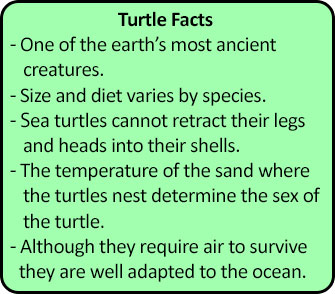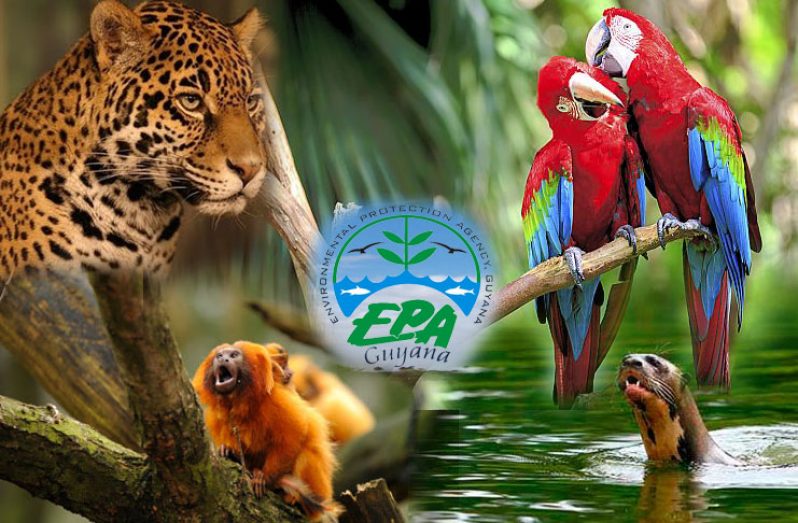Sea turtles also known as marine turtles are found in warm and temperate waters throughout the world. Turtles have been around for more than one hundred million years and are said to be older than dinosaurs. The shell of the turtles are streamlined for swimming through the water and consists of an upper part (carapace) and a lower part (plastron) and all but the leatherback are covered by hard scales which are often used to identify the species.

The female turtle, laden with eggs, comes ashore and digs out a nest in the ground with her back flippers. She then lays her eggs in the nest and buries them (with the sand she dug out) and returns to the ocean. The young turtles after hatching, dig themselves out of the nest and move towards the ocean.
Where in Guyana can we find sea turtles?
In the north western region of Guyana lies a ninety (90) mile long beach formed from the shell of mollusks. The beach is located between the mouths of the Pomeroon and Waini rivers and is called Shell Beach. It is the only place in Guyana where four (4) of the world’s seven (7) endangered turtles nest, these are, the Leatherback, Green, Hawksbill and Olive Riley Turtles.
Threats
Turtle populations worldwide are continuing to decline as a result of human-based activities. Some of these are:
Accidental capture;
Entanglement in fishing gear;
Loss of habitat due to coastal development;
Pollution: turtles often mistake plastic; bags for jelly fish and oftentimes choke and die;
Climate change;
Consumption of their eggs and meat for food; and
Predators (animals)that feed on young or eggs during breeding season.
Sea Turtle conservation
At the local, regional and international levels, there are institutions and organisations which  work to ensure conservation of the world’s sea turtles. Some well known agencies include; the International Union for the Conservation of Nature (IUCN), Guyana Marine Conservation Society (GMCS), the Wildlife Management Authority ( responsible for wildlife trade), World Wildlife Fund (WWF) and the Environmental Protection Agency (EPA).
work to ensure conservation of the world’s sea turtles. Some well known agencies include; the International Union for the Conservation of Nature (IUCN), Guyana Marine Conservation Society (GMCS), the Wildlife Management Authority ( responsible for wildlife trade), World Wildlife Fund (WWF) and the Environmental Protection Agency (EPA).
Marine protected areas, parks, biological reserves, aquariums etc. provide opportunities for people to learn more about sea turtles through scientific research, turtle spotting, photography, recreation etc. Cognizant of this and the need to conserve sea-turtles Guyana established Shell Beach as a Protected Area, thus enabling the four species of marine turtles to continue to nest there unhindered.
The Guyana Marine Conservation Society (GMCS) has over the years, implemented numerous education and awareness programmes on the importance of Shell Beach for turtle conservation, especially in Region 1.This year, on April 22, Earth Day, GMCS launched its Environmental Awareness and Education campaign and reiterated its commitment to protecting Guyana’s Marine environment.
World Turtle Day will be celebrated on May 23, take the opportunity to learn about what you can do to protect turtles. Here are a few tips to start you off:
• Never buy turtles or their eggs;
• Never remove turtles from the wild; and
• Report the sale of turtles or their products.
Source:
You can share your ideas and questions by sending letters to: “Our Earth, Our Environment”, C/O EIT Division, Environmental Protection Agency, Ganges Street, Sophia, GEORGETOWN, or email us at: eit.epaguyana@gmail.com


.jpg)











